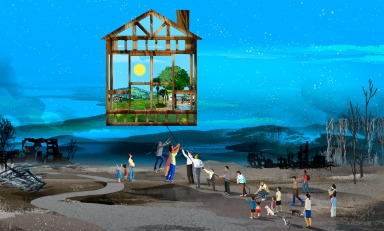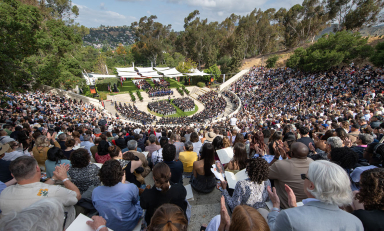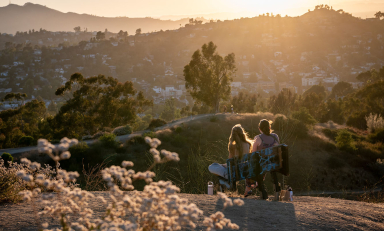LoGrande was questioned by Los Angeles Times architecture critic Christopher Hawthorne and audience members during a Dec. 1 conversation sponsored by Occidental College's Urban and Environmental Policy Institute and the Times. The two were introduced by politics professor Regina Freer, a member of the city Planning Commission, who called LoGrande "a problem-solver."
"There is a great thirst out there for real planning," acknowledged LoGrande, a 13-year Planning Department veteran who was confirmed by the City Council Aug. 4 following the resignation of his predecessor, S. Gail Goldberg. Rather than a department that only reacts to individual project proposals and processes applications, LoGrande said he wants his policy planning division to renew its focus on long-range planning and guide future development.
That's a challenge, given recent city budget cuts. One strategy LoGrande outlined is to pursue partnerships with transit agencies such as the Los Angeles County Metropolitan Transportation Authority to make completion of community plans part of the planning process for transit projects funded by Measure R. County voters approved the measure in November 2008 to provide a projected $40 billion for traffic relief and transportation upgrades over the next 30 years.
"Rather than be caught flat-footed, we want to be sure that land-use plans around those projects actually include the ridership," he said. At the same time, he said he has begun some "difficult conversations" with council members about prioritizing the department's work in a way that allows long-range planning to continue uninterrupted by a constant stream of ad hoc requests.
City planners also will borrow from the pilot project model created by New York City Transportation Commissioner Janette Sadik-Khan '82, LoGrande said. Eight areas of the city will be selected for implementation of unspecified pilot programs, possibly funded by grants from the Southern California Association of Governments. "We actually are going to take some risks, see what the reaction is, and learn from that," he said. "That's where all this inspiration came from, from one of your alumni."
In response to questions from Hawthorne, LoGrande said he regarded the idea floated this week by Anschutz Entertainment Group to build a new NFL stadium near Staples Center in downtown Los Angeles as a "unique opportunity." "I'm all for them putting it in L.A.," he said. "It's a multi-use center that would give us lots of opportunities to use that space. The key will be how we encourage them to think about building it in an urban environment." That means not surrounding it with acres of parking lots, but connecting it to the surrounding neighborhood and existing transit systems, he said, adding that the city's ability to negotiate a development agreement with AEG gives it leverage to obtain such public benefits. "The public and planners need to say, ‘Here's what we expect.'"
When an audience member questioned the city's ability to obtain an architecturally distinguished stadium project, LoGrande expressed optimism that city planners could have a significant impact on its design by enlisting allies in the private sector. "I think it is possible," he said. "We need to make sure architects [in the community] are heard. We find that when we tap into that infrastructure, the project architect feels empowered to talk to the developer" about design issues.
Asked by Hawthorne about the policy issues posed by major city streets such as nearby Colorado Boulevard in Eagle Rock, LoGrande signaled a willingness to reexamine a process in which decisions historically have been dictated by concerns about traffic flow. "We need to look at streets differently," he said. "There are so many examples of bad street widenings that even the Department of Transportation understands they can't do that anymore. We need to require wider sidewalks and more trees, rather than wider streets...A lot of it is looking at streets community by community and using pilot projects to see what's possible."



